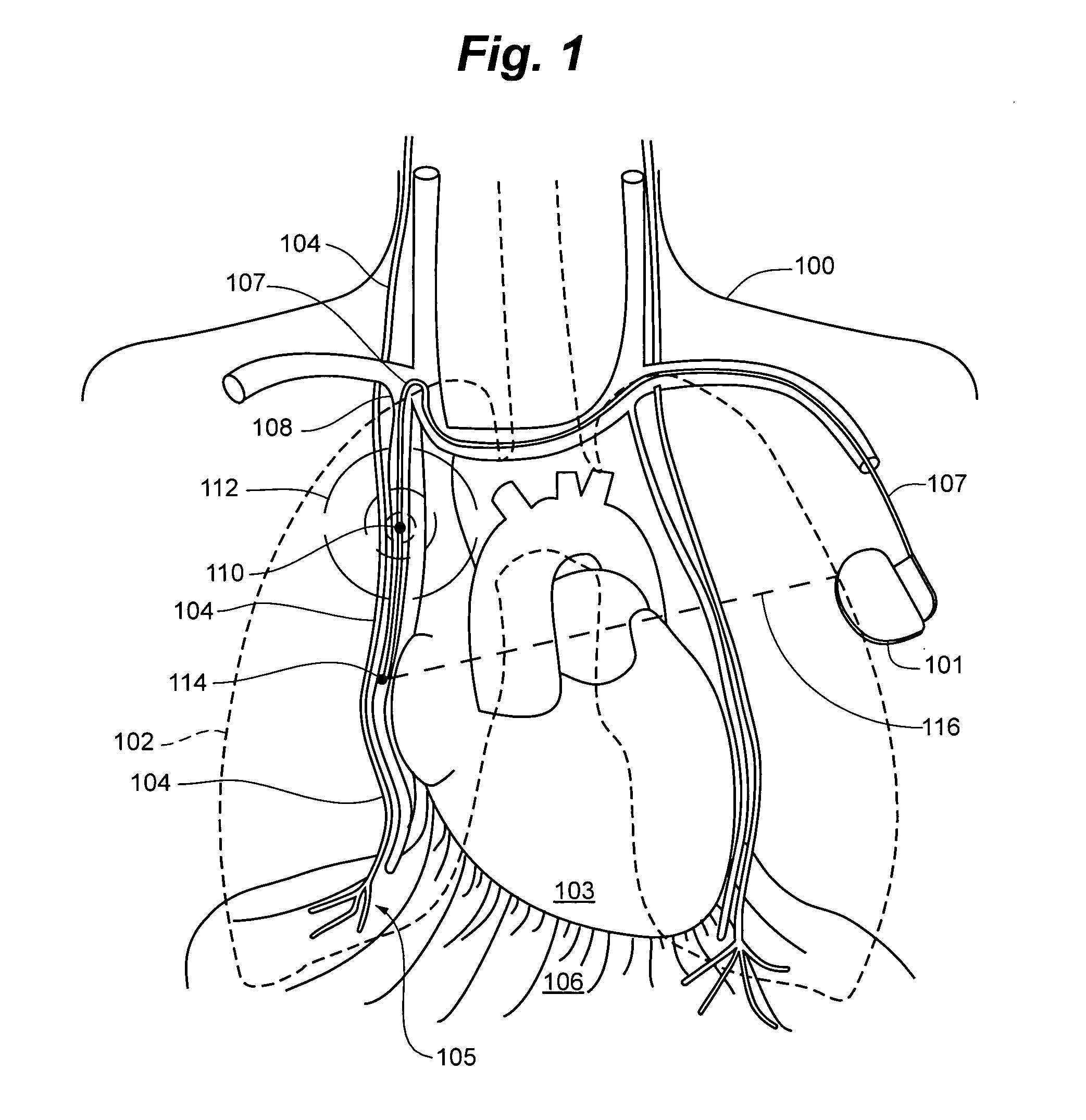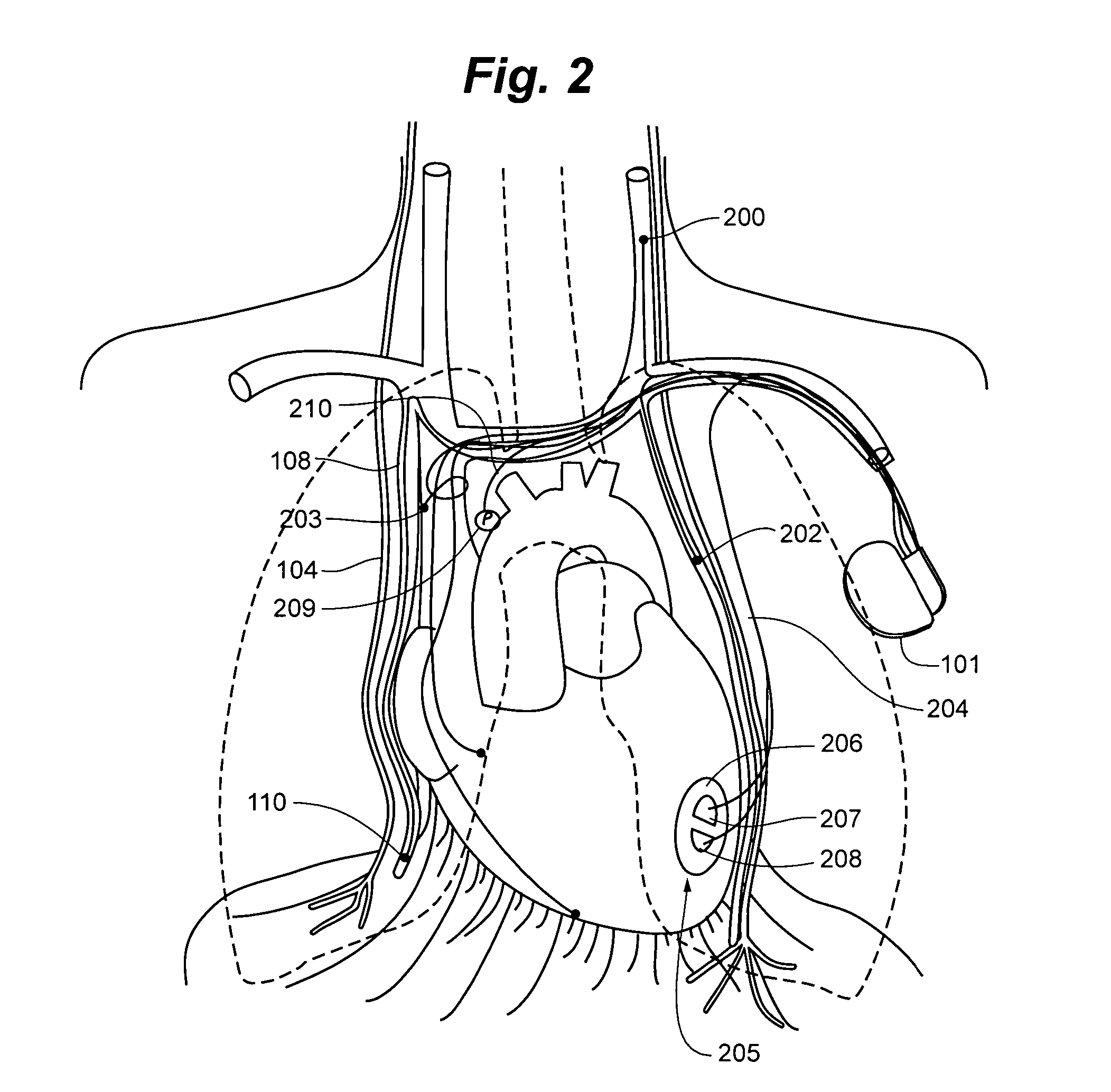System and method to modulate phrenic nerve to prevent sleep apnea
- Summary
- Abstract
- Description
- Claims
- Application Information
AI Technical Summary
Benefits of technology
Problems solved by technology
Method used
Image
Examples
Embodiment Construction
[0024]FIG. 1 is schematic diagram showing an implanted medical device (IMD) 101 implanted in a patient's chest for carrying out a therapeutic stimulation of respiration. The patient has lungs shown in bold outline and indicated at 102 overlying the heart 103. The right phrenic nerve 104 passes from the head alongside the heart to innervate the diaphragm 106 at location 105.
[0025] In this embodiment a transvenous lead 107 passes from the IMD 101 and passes through venous vasculature to enter the cardiophrenic vein 108 on the right side of the patient. The cardiophrenic vein 108 lies next to the phrenic nerve 104 along the heart. Electrical stimulation pulses supplied to the stimulation electrode 110 on lead 107 interact with the phrenic nerve to stimulate it and thus activate the diaphragm 106. In the figure a series of concentric circles 112 indicate electrical stimulation of the phrenic nerve. In this embodiment the stimulation electrode 110 lies far enough away from the heart 103...
PUM
 Login to View More
Login to View More Abstract
Description
Claims
Application Information
 Login to View More
Login to View More - R&D
- Intellectual Property
- Life Sciences
- Materials
- Tech Scout
- Unparalleled Data Quality
- Higher Quality Content
- 60% Fewer Hallucinations
Browse by: Latest US Patents, China's latest patents, Technical Efficacy Thesaurus, Application Domain, Technology Topic, Popular Technical Reports.
© 2025 PatSnap. All rights reserved.Legal|Privacy policy|Modern Slavery Act Transparency Statement|Sitemap|About US| Contact US: help@patsnap.com



